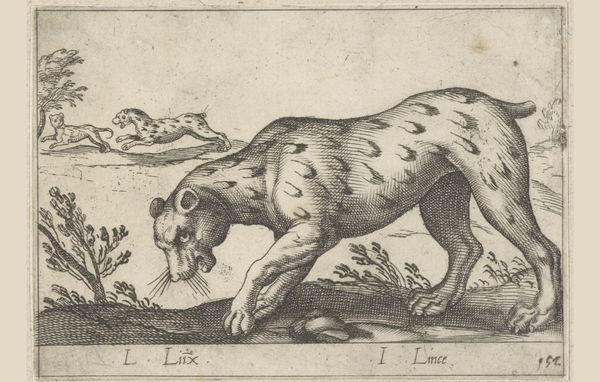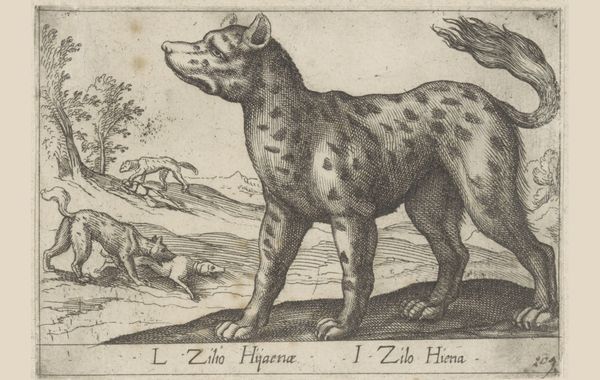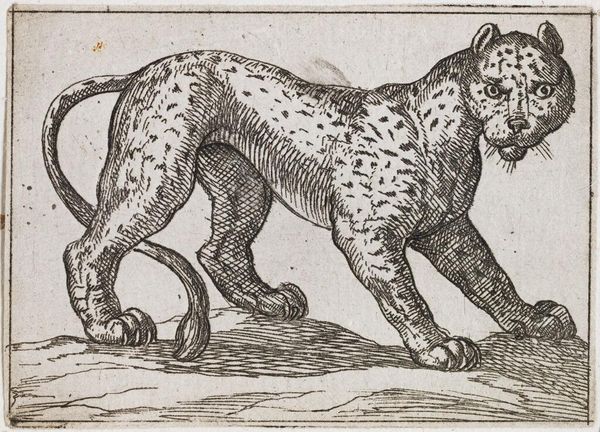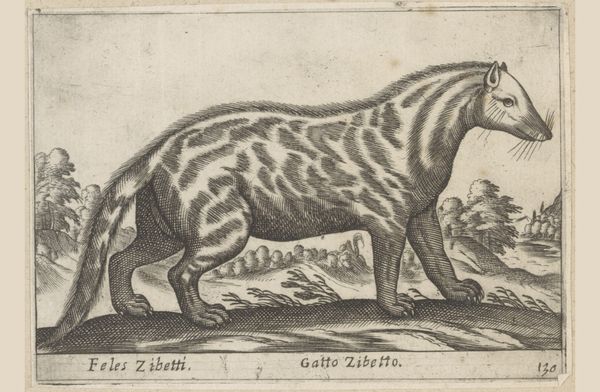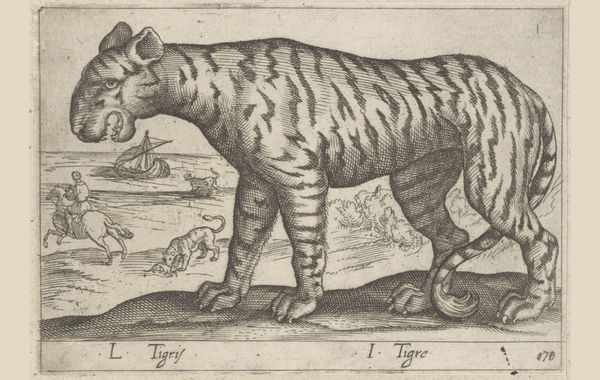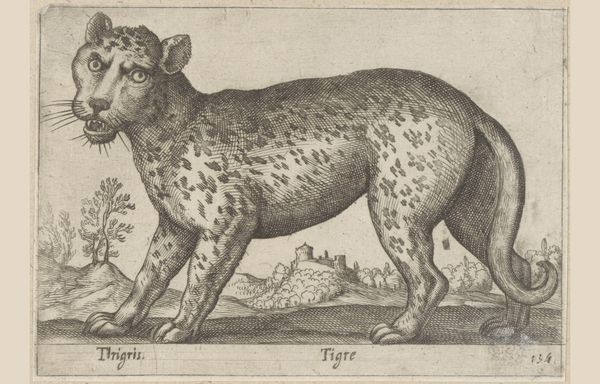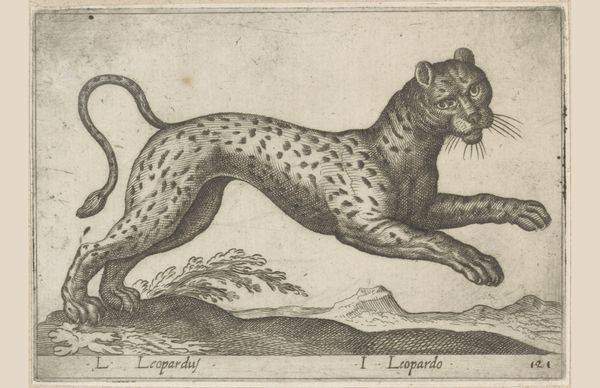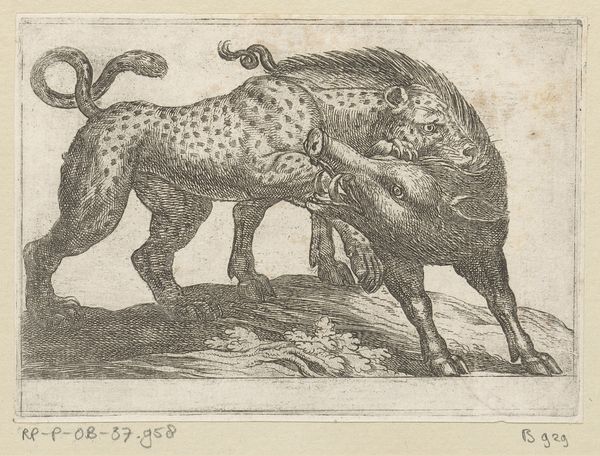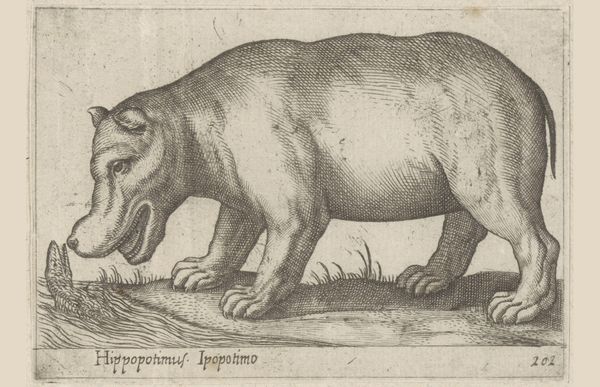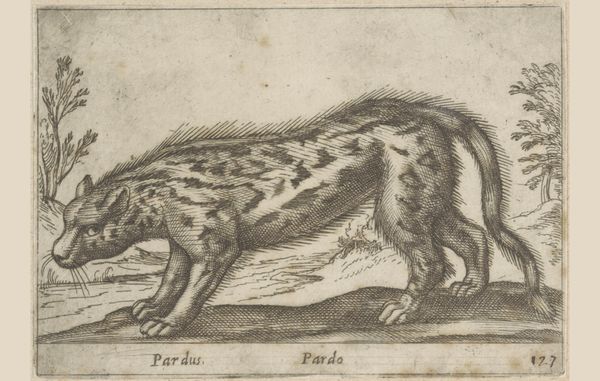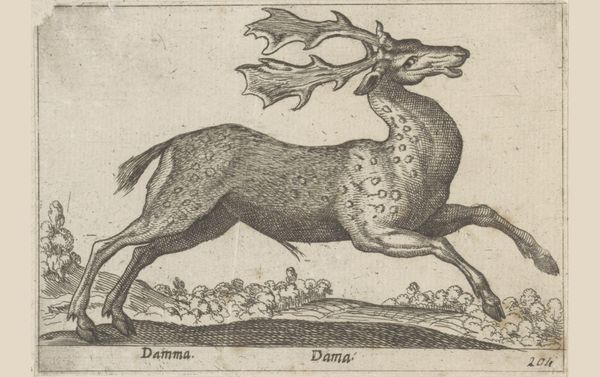
print, etching, engraving
# print
#
etching
#
landscape
#
classical-realism
#
figuration
#
line
#
history-painting
#
engraving
#
realism
Dimensions: height 95 mm, width 137 mm
Copyright: Rijks Museum: Open Domain
Curator: Before us is “Panter,” an etching and engraving made before 1650 by Antonio Tempesta, now residing here at the Rijksmuseum. Editor: Well, the first thing that strikes me is the almost exaggerated detail in the depiction of the panther, contrasting sharply with the much more simplified landscape elements in the background. Curator: Indeed. Tempesta masterfully uses line to define the panther’s muscular form, almost heroic in its posture. Notice how the very pattern of its spots seems deliberate, contributing to an overall impression of controlled power. Editor: Controlled is a good word. While the primary subject exudes that confident stance, I cannot shake the sense of violence emanating from the activity teeming within the landscape behind it. Curator: I see your point. While the foreground depicts the majestic cat in what appears to be its natural habitat, Tempesta weaves in classical references. The panther itself, for instance, was a symbol of both Dionysus and Bacchus. We're seeing it, even through a Northern European lens, embodying characteristics that held weight in mythology. Editor: That allusion to the symbolic adds another layer of depth. The composition guides our eyes, contrasts and echoes. It highlights how, formally, this is about balancing stillness and dynamic motion. Curator: Consider also, that to Tempesta’s contemporaries, such images weren't just representations, they were affirmations of a particular world order. Here, the Panther seems to rule and dominate the composition. There is a real message of control in what the viewer sees and can accept. Editor: Absolutely, and observing this today encourages an appreciation for artistic agency itself, as artists frame perception to create their work and share its intended effect. Curator: Studying ‘Panter’ allows a fascinating exploration of naturalistic depiction interwoven with deeper historical and cultural threads, still echoing through centuries. Editor: Agreed. Analyzing the image’s formal choices enhances our experience. By paying close attention to its lines and forms, one understands better the artist's intent and the animal itself.
Comments
No comments
Be the first to comment and join the conversation on the ultimate creative platform.
